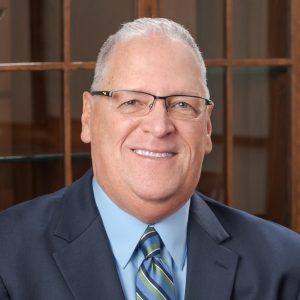Writer: Andrea Teran
 4 min read March 2024 — Greater Houston, known for its education diversity with more that 40 community colleges and universities, is experiencing a financial boost. Endowments at local colleges and universities such as Rice University and San Jacinto College continue to flow in, providing the capital resources to deliver high-quality education to the next-gen workforce.
4 min read March 2024 — Greater Houston, known for its education diversity with more that 40 community colleges and universities, is experiencing a financial boost. Endowments at local colleges and universities such as Rice University and San Jacinto College continue to flow in, providing the capital resources to deliver high-quality education to the next-gen workforce.
At Rice, endowment peaked at $8 billion in 2021, with a subsequent year holding strong at $7.8 billion. Also in 2022, Rice announced it would build a new science and engineering building with $57 million received from the estate of businessman Ralph O’Connor. Meanwhile, San Jacinto College’s endowment has leaped from $7.4 million to $25.2 million, fueled by record-breaking gifts including a $30 million donation from billionaire philanthropist MacKenzie Scott.
To gain deeper insights into the state of higher education in Houston, Invest: sat down with Richard Walker, president of the University of Houston-Clear Lake (UHCL), and John Sharp, chancellor of The Texas A&M University System. They provided valuable perspectives on their institutions’ recent achievements, strategic approaches to growth, and visions for the future. Their focus on affordability, innovation, and community engagement reflects a broader commitment to ensuring that higher education in Texas remains a cornerstone of personal development and economic growth.
What have been your institution’s achievements over the past year?
 Richard Walker: The University of Houston-Clear Lake, part of the University of Houston System, is uniquely positioned in the Bay Area of Houston, offering distinct advantages due to our close ties with NASA, Boeing, and the aerospace industry. Initially established to serve upper division and graduate students at NASA’s request, we’ve expanded to include freshmen and sophomores since 2014 and recently became a doctoral-granting institution. This progression has elevated us from a regional to a national ranking, encapsulated in our new tagline: Nationally ranked but regionally focused.
Richard Walker: The University of Houston-Clear Lake, part of the University of Houston System, is uniquely positioned in the Bay Area of Houston, offering distinct advantages due to our close ties with NASA, Boeing, and the aerospace industry. Initially established to serve upper division and graduate students at NASA’s request, we’ve expanded to include freshmen and sophomores since 2014 and recently became a doctoral-granting institution. This progression has elevated us from a regional to a national ranking, encapsulated in our new tagline: Nationally ranked but regionally focused.
Our primary focus on student success has led to our largest graduating classes in recent years, signifying the effectiveness of our educational offerings. In addition, our emphasis on community and industry partnerships has fostered substantial experiential learning opportunities. Through strategic partnerships, notably with Boeing, KBR, and Welby Financial, we’ve created targeted experiential learning projects that closely align classroom learning with industry needs. This approach not only enhances student preparedness for the workforce but also strengthens our contributions to the aerospace sector and workforce development in our region.
 John Sharp: This past year has been remarkable. We received $1.19 billion in new funding from the Legislature, a record-breaking amount for any institution. This reflects their confidence in how we utilize these funds. Additionally, The Wall Street Journal ranked Texas A&M as the top university in Texas, recognizing our effectiveness in job placements for graduates. For instance, our law school ranks first nationally for quickly securing employment for graduates, surpassing renowned institutions like Harvard and Yale.
John Sharp: This past year has been remarkable. We received $1.19 billion in new funding from the Legislature, a record-breaking amount for any institution. This reflects their confidence in how we utilize these funds. Additionally, The Wall Street Journal ranked Texas A&M as the top university in Texas, recognizing our effectiveness in job placements for graduates. For instance, our law school ranks first nationally for quickly securing employment for graduates, surpassing renowned institutions like Harvard and Yale.
Moreover, our innovative medical school in Houston stands out, offering a program where graduates earn a medical degree and a master’s degree in engineering at the same time. This unique program prepares students for future medical technology advancements. We’re also involved in TMC3, a new research facility in Houston’s Medical Center, which promises significant medical research collaborations.
How are you addressing affordability for students?
Walker: Affordability is a critical concern for our students. Our undergraduate population’s average age is 26, and many of our students work and have families. Balancing part-time and full-time undergraduate commitments is a challenge, making affordability a top priority. We strive to keep attendance costs in check and provide additional financial support to our students. I initiated the President’s Excellence Scholarship Fund to focus on student aid and support, emphasizing the importance of affordability given our student body’s unique demographics. Notably, we have maintained our commitment to affordability by not raising undergraduate tuition for the past three years.
Sharp: Our key focus has been on affordability. We’ve successfully frozen tuition for two years and facilitated funding for educational programs. We initiated the Houston Engineering Academy, catering to talented young individuals across Texas who might struggle with the costs of living or need to stay close to family. These academies allow students to start at a local community college in Houston, where we send engineering professors. They take basic courses at the community college and engineering courses from our professors. After two years, they transfer to Texas A&M as juniors, saving tens of thousands of dollars. These students have shown remarkable academic performance, often surpassing those who started as freshmen at A&M.
What initiatives or projects are underway that impact your community?
Walker: We’re strategically launching new academic programs based on industry demand, informed by data analysis. One new program is the Master of Science in Nursing Education and Leadership, created in response to the high demand for qualified faculty in community colleges and leadership roles in nursing administration. We’re also developing a Bachelor of Science in Aerospace Engineering, responding to industry and student demand, and supported by UH to offer the bachelor’s program. Additionally, we’re incorporating an aerospace business enterprise specialty into our MBA program to address the needs of the growing aerospace industry, particularly focusing on private companies working with NASA and others.
How is technology and innovation impacting educational approaches?
Sharp: The key drivers of innovation at universities, particularly in the realm of intellectual property, discoveries, and entrepreneurship, are the students. Contrary to common belief, these breakthroughs don’t primarily originate from faculty but from the students themselves. At Texas A&M, we’re cultivating an environment where students can leverage their research – considering we’re the leading research university in the central and southwestern United States – to create practical applications and businesses. This transformation of research into tangible enterprises is a major focus for our future.
For more information visit:
